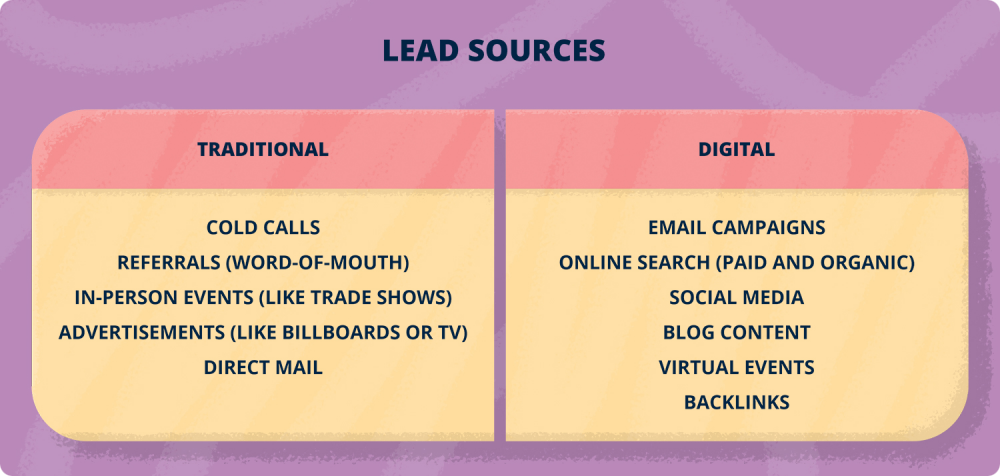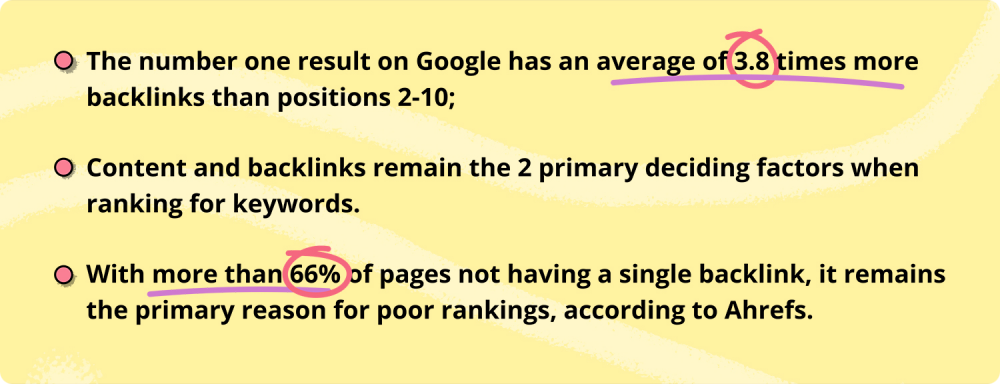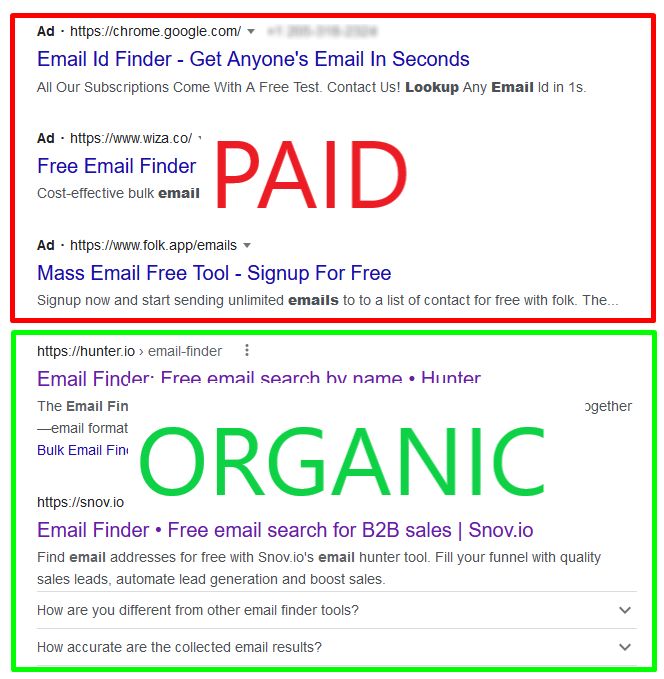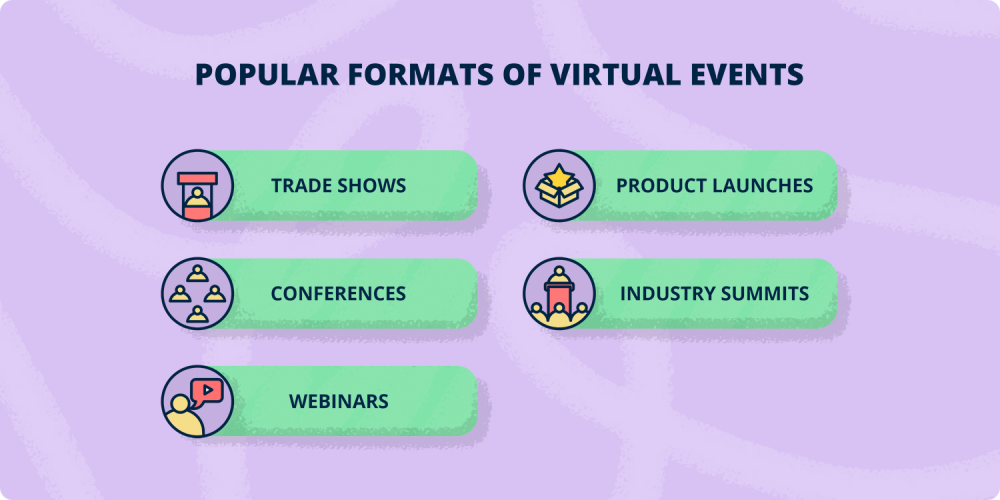When a marketer or a sales rep plans a campaign or tries out a new lead generation channel, they dream of turning their audience from potential to real customers. But what exactly is the lever that provides this magical transformation? How can it be defined and measured?
Once you know where your leads are coming from, you’re in a much better position to capitalize on them. Different lead sources will bring in various types of leads, and only qualified leads are likely to become your customers in the future, while the rest are mainly a waste of your time and budget.
That’s why it’s essential to identify, track, and manage lead sources accordingly. To hit this target, you should keep up with the times as new lead sources pop up here and there, and this process is never stagnant.
Our blog post will tell you more about lead sources and their types, how to track and manage them, and how all this can affect the effectiveness of your marketing efforts.
Outline:
What is a lead source, and why does it matter?
A lead source is a way a prospect is first brought into your sales funnel. Put simply, it’s a channel through which you search email addresses and acquire leads. For example, your leads can discover your business through organic search, LinkedIn outreach, Instagram stories, email campaigns, and paid ads — all of these are first-touch channels.
Knowing where your leads are coming from is essential for effective lead generation. And 91% of marketers truly believe that lead generation is a primary goal of their entire work!

A thorough study of your lead sources helps you understand why and how your audience finds you and use this data to fine-tune your marketing and sales strategies, for example, to:
- Figure out where your precious time is best spent;
- Optimize your campaigns based on which lead sources are most productive to your business so you can hone in on them;
- Better understand your prospect’s pain points and target your sales pitches more accurately;
- Weed out the ineffective sources and improve your return on investment (ROI);
- Keep track of your progress and measure your success over time.
In addition, understanding what types lead sources are divided into will help you select the right ones for your campaigns.
Lead source examples
Lead sources are highly diverse and work in both inbound and outbound directions.
Your leads might initiate contact with your company if they find it in search results while looking for a particular product or service that you happen to offer. Meanwhile, if you are the one reaching out to a lead via cold emails, cold calls, or outdoor ads, these are also lead sources.
To avoid confusion, lead sources are often divided into two categories: traditional and digital.

Let’s take a closer look at some of the most sought-after digital lead generation sources, as they’ve become a new norm of everyday B2B sales activities, especially after the Covid-19 pandemic outburst.
#1. Email marketing
Email marketing is one of the oldest and most helpful lead sources, especially in B2B. Recent research proves that over 50% of marketers agree email campaigns are the most effective tactic to acquire new prospects and the best channel for early-stage lead generation. The stats below speak a hundred words.

There are several ways that email marketing can act as a lead source.
- The first way is through the subscription form on your website. If someone fills out the form and subscribes to your email list, they indicate they’re interested in what you have to say.
- The second way is through affiliates. If someone refers a customer to your business, they receive a commission when the referee buys something from you. You can promote affiliate products through an email sequence so that affiliates can learn more about what you offer and how they can benefit from it.
- The third way is through cold emailing. You can email a potential customer who doesn’t know who you are, hoping they’ll be interested in your product, click on one of your links, or contact you for more information.
Email campaigns are seen as less intrusive than other lead generation methods such as cold calling.
However, not everyone likes cold emails either, to be honest. Among the disadvantages of email marketing is the need to build up one’s contact database, a high risk of emails landing in spam, as well as limited opportunities to influence the open rate.
And even though email marketing is a cost-effective way to reach your leads, its success largely depends on the accuracy of targeting the right audience and segmenting email recipients based on your buyer persona.
But don’t worry. All of these shortcomings can be fixed with the help of email automation tools like Snov.io.
|
💡 Pro-tip Your email campaigns only if your messages actually hit the inbox. One of the ways to ensure that is to use email checker tools. |
Why should you automate your email marketing?
✔️ First, it saves you time. You can create a series of emails that will go out automatically without worrying about sending them manually.
✔️ Second, email automation allows you to target your audience more precisely — personalize your messages based on the lead’s interests or demographics.
✔️ Third, email automation helps you build better relationships with your customers. You can nurture leads and convert them into customers over time with relevant, engaging automated emails.
#2. Organic search via search engines
Search engines are the ever-lasting source of leads, with 75% of B2B traffic coming from organic and paid searches. In particular, organic traffic is showing fantastic growth these days and has reached 53% in 2022.
Organic search is generated when someone types in a keyword or phrase related to your product or service into a search engine, and your website appears as a result. This is the most coveted lead type because it’s both qualified and free.
However, organic lead sources require serious work from marketers in terms of search engine optimization (SEO).
SEO is the process of improving the visibility and ranking of a website in search engine results pages (SERPs). When done correctly, it can help improve your website’s organic search rankings sufficiently.
Everyone fights for the number one search result spot for as many relevant keywords as possible. It’s natural since ranking higher in SERPs, you’ll get more visibility and a higher click-through rate (CTR) that most often leads to more conversions.
SEO is also a fantastic technique to improve your website’s usability and user experience. If people can easily find the information they’re looking for on your site, they’re more likely to stay longer and convert. Plus, good SEO can help increase the overall quality of your website content, which can make it more persuasive for potential customers.
You can use different techniques to reach a higher search ranking, and the most effective approach will vary depending on your website and its target audience. However, the most common SEO techniques include optimizing website content, improving website architecture, and building backlinks.

Here, we’ve collected some basic tips for you to get started if you want to improve your SEO results:
- Research which keywords are relevant to your business and use them throughout your website, including in titles, meta descriptions, and header tags. Utilizing tools like the Google Trends API can aid in identifying trending keywords.
- Make sure your website is easy to navigate and has high-quality content people want to read.
- Don’t forget to name your images correctly and use keywords in the file name and alt text.
- Get high-quality links from other websites to yours.
- Monitor your website’s search engine rankings and adjust your strategy accordingly.
- Regularly update your website with new content and keep track of your results.
#3. Paid advertising
Paid search is when you use targeted ads to bring in leads from specific websites or online platforms. This lead source is usually more expensive than others but can be highly effective, again, if done correctly.
The paid search goes far beyond Google and is applied to all paid advertising channels on search engines like Yahoo, Bing, and others.
However, Google Ads remains the most popular lead source of this type, with around 2% CTR. It allows you to place ads on Google and millions of other websites and target your ads to people based on what they’ve searched for, where they are, and what type of device they’re using.
Most often, marketers use pay-per-click search ads where they are charged each time an ad is clicked.

Although it’s probably the most popular type of online advertising model, there are many others, old and new ones, for example:
- Display advertising shows promising results when placed on sites with high traffic only. The reason is that it has quite a low CTR — just 0,06%. Nonetheless, this type of advertising consistently shows positive ROI due to its affordable cost.

- Product listings are a comparatively new type of advertising, providing customers with an opportunity to shop directly from the search results page. This feature was rolled out by Google in 2020 to showcase popular products and is gaining popularity among investors.

The good thing about paid ads is that you’re not spending money to be seen by thousands of users, most of whom aren’t interested in what you’re selling. What you pay for are qualified, viable leads. And that means better sales results in the long run!
And if you’re spending money on paid leads and not seeing ROI, maybe it’s time to switch to organic sources?
#4. Social media
Social media can be a powerful tool for businesses of all sizes when it comes to lead generation. You can advertise your brand directly on one or several social media networks, as many marketers worldwide do.
According to eMarketer, social media accounts for more than a quarter of all global ad spending this year. The average social media CTR worldwide is around 1%.
Let’s check out what you can do to maximize the effect of your social selling.
Maintaining a company page
Here are a few tips on how you can attract more attention to your page on social media :
- Continuously provide your audience with consistent content in the form of blog posts, e-books, webinars, or even free consultations — anything that will help them see the value of working with you.
- Use hashtags sparingly to find potential customers. They can be a great way to connect with other users interested in the same topics. However, if you use them too much, they can become desensitizing and lose their effectiveness.
- Accelerate word of mouth by developing referral programs that stimulate your happy customers to share their experiences with friends via social media. Collect their testimonials and use them in your social media posts.
- Be interactive with your followers. Reply to their comments, ask them questions, and generally make them feel you’re paying attention to them. Remember that social media is a two-way street. If you don’t engage with your followers regularly, they’ll quickly lose their attention.
- Have a unique voice. Don’t be afraid to be yourself and share your opinions — people will appreciate the honesty and personality you bring to your social media accounts. By doing so, you can create a community of people interested in what you have to say and likely to convert into customers.
Cooperating with influencers
Suppose it takes a lot of time to build your page on social networks from scratch, and you need to tell them about your product as soon as possible. In that case, you can cooperate with influencers with a sufficiently high following.
Not long ago, product mentions by famous people were extremely popular in attracting leads. However, the paid posts became so many over time that the audience’s trust in such promotions decreased.
In addition, it’s becoming difficult to understand whether your message reaches your potential customer and predict how effective this lead source is. The reason is that many influencers have an inactive audience, which mainly consists of bots and abandoned accounts.
Therefore, for high-quality interaction with the right influencers, you’ll need experience or the advice of skilled specialists in the industry.
Investing in targeted advertising
26% of social media users claim they tend to buy brands they see advertised. Isn’t it enough to answer your question of whether social media ads are effective for lead generation? Facebook, LinkedIn, Twitter, Instagram, or Snapchat — the choice is yours.
Live streaming
Live videos are a relatively new lead source. People are tired of overly flawless photo and video content and increasingly prefer formats closer to real life.
Live streams satisfy the audience’s desire to be closer to the people and brands they follow and receive useful information in an interactive format — by asking and receiving an answer to their question or by commenting on what they saw in real-time.
Launching a live stream is easy. All you need is to select the time and platform. Facebook, Instagram, or YouTube, it’s up to you to choose depending on your product and audience. All these platforms support the function of live streams, so you don’t need complex equipment or technical knowledge for that.
When you plan to use live streaming as a lead source, make sure to:
- Entice your audience with an attractive topic and eye-catching headlines promising to reveal some secrets and backstage insights that will help them improve their performance.
- Demonstrate and explain the benefits of your product right during the streaming.
- Offer a benefit at the end of the video — discounts, promo codes, or other exclusive incentives.
- Record your live stream. You can edit it afterward and sell it to those who were late or unable to connect to your live event. Or you can provide your video to new subscribers for free. By doing so, you can capture even more leads and drive sales.
After you’ve practiced live streaming on social networks, you can jump higher and hold a virtual event. This lead source is a rising star, and everyone wants to bask in the rays of its light.
#5. Virtual events
Virtual events have become a powerful way to reach the target market and fill pipelines with qualified leads.
Here are just a few reasons businesses leverage virtual events as a lead source:
- With the help of virtual events, you can easily reach a global audience and have an immediate in-depth conversation about your products and services with your potential customers. There’s no need to limit your reach to a specific geographic area.
- Virtual events allow participants to engage with speakers and exhibitors in ways offline events don’t. This fosters meaningful communication and ultimately results in more high-quality leads who have already shown some interest in your solution.
- Online events are typically much more cost effective than traditional events. They are cheaper than hosting an in-person event. This is also the reason businesses that use virtual events as a lead source see ROI several times higher than from traditional lead generation methods.
All these factors make virtual events a golden lead source for businesses that want to reach a large audience but don’t have the budget for holding or participating in a physical event.
But what are the steps you should take to generate leads before, during, and after the virtual event?

- The initial step on your path to a virtual event is choosing the format of your event. Your choice depends on your goals. What are you hoping to achieve by participating in virtual events? Do you want to increase brand awareness? Generate leads? Close more sales? Be clear about your objectives and track your progress.
- Do your research, find events relevant to your industry, and make arrangements for your participation.
- Ensure you have a strategy for engaging with potential leads and nurturing them through the sales process. Most virtual events offer a range of lead capture tools, such as registration forms, surveys, and demos, so make the most of them.
- When you’ve captured a lead’s contact information, follow up with them shortly to increase the chances of converting them into customers. Following up is usually done via email, so it would be useful to read the “Email marketing” section of this article again and automate your sending for better results.
Why do you need to track lead sources?
86% of marketers increased their brand awareness using one or more digital lead sources.
But how do they know which lead sources performed better than others?
They track them.
Continuously.
Non-stop.
Tracking lead sources is a must to identify the best-performing channels and use your resources accordingly. Each lead source has its unique conversion rate, knowing which will help you determine where to allocate your budget for the most significant ROI.
You’ll also see which lead sources are generating the most qualified leads. This information is essential for sales teams as it allows them to prioritize opportunities and focus their time on the leads that are most likely to convert into customers.
Another benefit of tracking your lead sources is identifying any leaks in your sales funnel. If you’re seeing a lot of leads coming in from a particular source but not so many closed deals, then that source might be worth investigating further.
Lastly, tracking your lead sources helps you measure your sales and marketing campaigns’ success to determine whether or not they’re worth continuing.
How to capture lead source data?
There are tons of ways to track lead sources these days. One of the most popular is to use UTM codes in links to track the origin of each click on your link.
Another way to track leads is through Google Analytics, a free web analytics service that lets you see how people interact with your website. It’s a simple way to see which pages convert the most leads and identify potential marketing opportunities.
Among other lead tracking tools are Google Ads and Facebook Ads which tell where people go after seeing your paid ads.
You can also use the automation power of a CRM system to organize lead source information, giving you a detailed picture of each potential customer. Here, checking out lead tracking tools, which are a plethora on the market, will be a good idea.
We’ve narrowed it down to the 5 advanced lead tracking tools, so you can find the one that works best for you:
- SalesforceIQ: This platform works well for small businesses that want a comprehensive CRM system that tracks leads.
- HubSpot CRM: This is an excellent option if you want a tool that provides marketing and sales insights.
- Pipedrive: This platform is great for sales teams to track their progress and pipeline.
- ActiveCampaign: Good for small businesses who want a CRM system with detailed lead tracking features.
- LeadPages: A viable option for businesses who want to create landing pages and track leads from those pages.
Once you have everything set up, don’t forget to test the platform. Make sure to track at least 100 leads so you can get a good idea of how the tool works to give you correct information on which leads and sales activities are worth pursuing.
Wrapping up
Selecting the right lead source pool for your sales and marketing campaign can be challenging, and analyzing lead source data will help you make the right choice. This knowledge will enable you to measure how effective your efforts are and focus your budget on the activities that bring the best results.
Additionally, you’ll be able to identify any underperforming campaigns, make necessary adjustments to bring in new leads, and turn them into customers.





